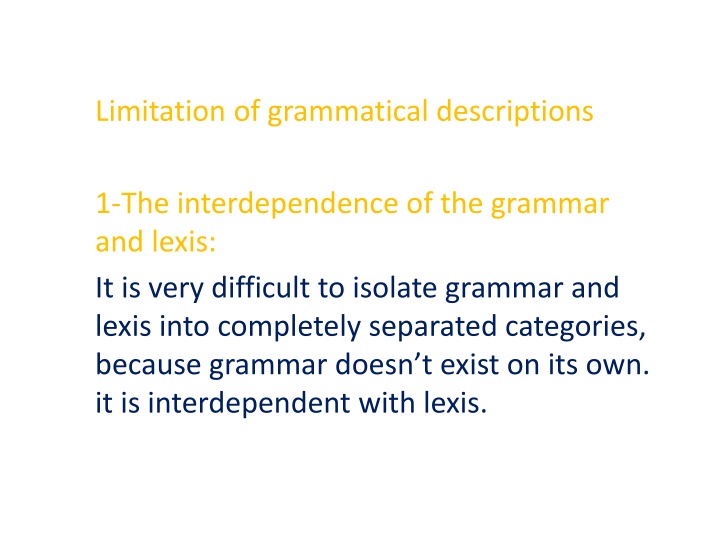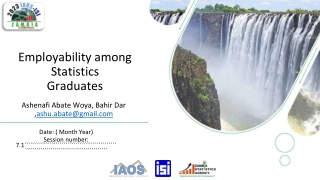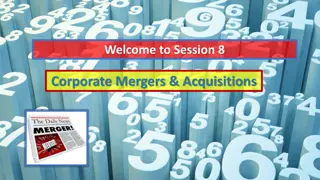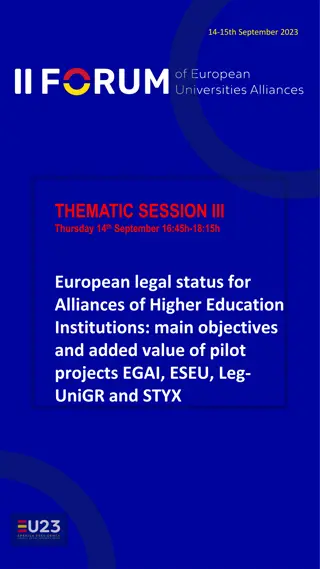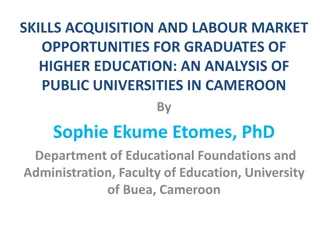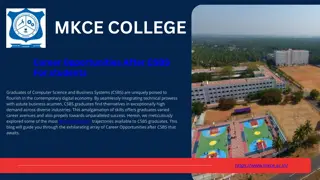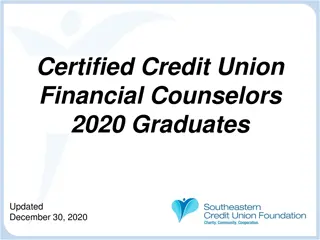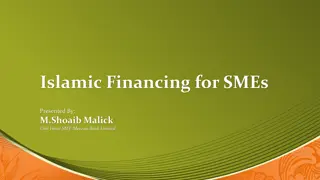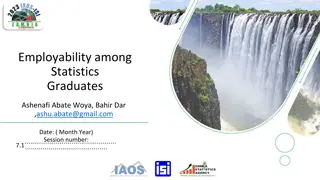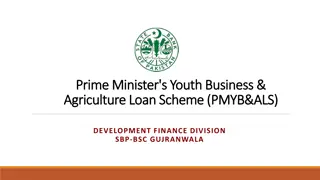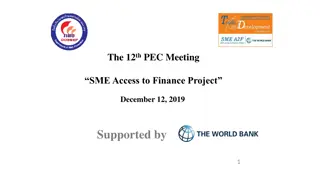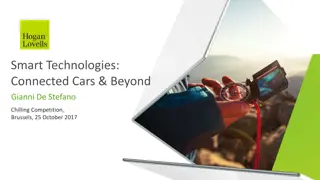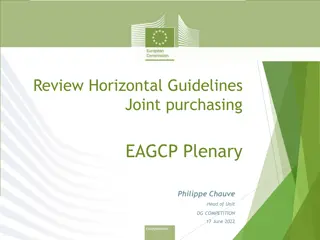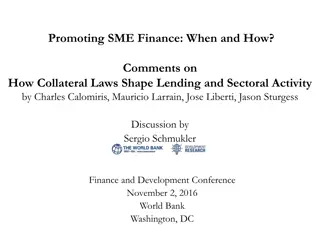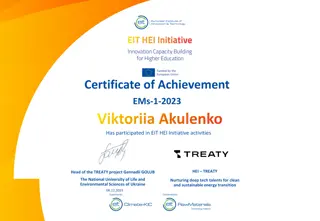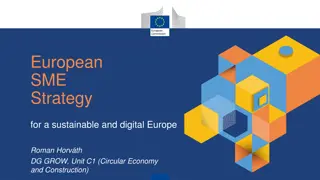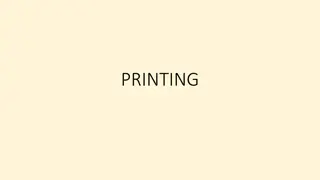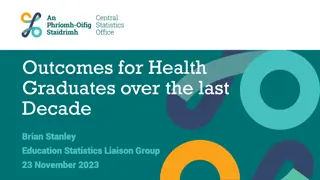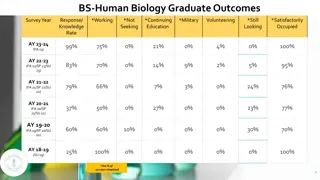HEI-SME Alliances: Creating Strategic Partnerships for Graduates and Economy Growth
This research aims to develop a conceptual framework for Higher Education Institutions (HEIs) to form alliances with Small and Medium Enterprises (SMEs). By studying the purpose, methodology, and theoretical framework, the focus is on creating sustainable strategies to enhance graduate outcomes, employability opportunities, and local economic growth.
Download Presentation

Please find below an Image/Link to download the presentation.
The content on the website is provided AS IS for your information and personal use only. It may not be sold, licensed, or shared on other websites without obtaining consent from the author.If you encounter any issues during the download, it is possible that the publisher has removed the file from their server.
You are allowed to download the files provided on this website for personal or commercial use, subject to the condition that they are used lawfully. All files are the property of their respective owners.
The content on the website is provided AS IS for your information and personal use only. It may not be sold, licensed, or shared on other websites without obtaining consent from the author.
E N D
Presentation Transcript
Limitation of grammatical descriptions 1-The interdependence of the grammar and lexis: It is very difficult to isolate grammar and lexis into completely separated categories, because grammar doesn t exist on its own. it is interdependent with lexis.
Presentation Asma Mahmoud Jabbar M.A program in Linguistics/Applied linguistics
2- lexicogrammar: the problem of defining boundaries -native speaker tends to use a great many ) 1983 expressions that are formulaic in nature , fixed or semi-fixed expressions that act as single lexical units used as whole. These prefabricated units are called formulaic sequences Nattinger&Decarrico (1992) were among the first to highlight the importance of these sequences, focusing on lexical phrases described as multi-word lexical.
These phrases have more idiomatically determined meaning than language that is put together each time. As form/ function composites, these lexical phrases differ from other formulaic language such as (kick the buckrt.
Learning grammar - Grammar learning was thought to take place through a process of habit formation. In order to help students overcome the habits of their native language and inculcate those of target language ,teachers conduced pattern practice drills: repetition, transformation etc. According to GG grammar learning was seen as rule formation
There were a shift toward a more communicative approach Views of grammar learning changed .they said that grammar was best learned subconsciously when students were engaged in understanding the meaning of the language to which they were introduced. those are (UG), which felt that target language input with negative evidence might be sufficient to have learners reset the parameters of UG principles in order to reflect the differences between the native language and target language grammars.
-others felt that explicit grammar teaching had a role. -SLA research tells us that an analysis of the language that learners use, their interlanguage , reveals that grammar is not acquired in a linear fashion. -learners use forms don t resemble target forms, such as using pre-verbal negation during early English language acquisition as ( no want) regardless of their native language . This behaviour explains why it has been said that interlanguage is systematic.
The learners system begins to shift (feldman,2006) , that rules formation doesn t account for all of grammar learning. - the method that is receiving a great deal of attention is emergentism ( Ellis&Larsen- Freeman,2006). In SLA, it is that some attention must be given to grammar by L2 .However, it is also clear that the attention to form should not come through the use of decontextualized drills or isolated grammar. Learner must complete the exercises satisfactorily when their attention is focused on the grammar.
Teaching grammar -Some explicit rules were traditionally far to implicit more interactive, but are favoured these days: 1-The use of some sort of input enhancement is an example of an implicit means of promoting. student noticing. 2-input flooding 3-boldfacing 4-guided participation 5-peer interaction 6-input- processing tasks
-Teachers cannot be satisfied with merely promoting their students noticing , language is a skill. Overt practice is needed . -It is important to point out, that in order for optimal transfer to happen , the practice must be meaningful. -If the students need to work on FORM , meaningful repetition is useful. -If the students learning challenging on MEANING , they need to practise bonding form and meaning together,like phrasal verb with physical actions(stand up, turn on the light). - If the challenge is USE students will need to make a choice.
-To pratise use of DISCOURSE GRAMMAE , students might be asked to choose between use of the active or passive voice after a giving prompt. - FEEDBACK is also seen to be a necessary part of grammar instruction. -Some applied linguists have suggested that students should be encouraging to make erors by being led down the garden path -Lyster(2004) observes that prompts, such as a teacher repeating a learners error verbatim with rising intonation, allow the learner to self-repair.
-The learning of grammar , as with the learning of many aspects of language, is a much more organic process. - many have recommended the use of a spiral syllabus. -Grammar teaching becomes more responsive than proactive. focus on form should only occur as needed, students should otherwise spend their time engaged in meaningful tasks and in learning content. - Not all grammar teaching needs to be reactive.
